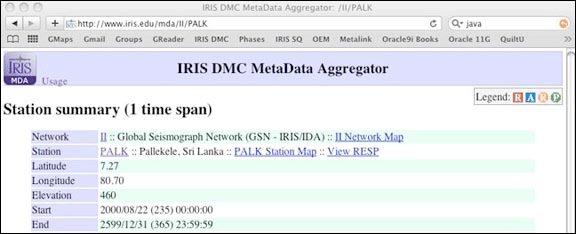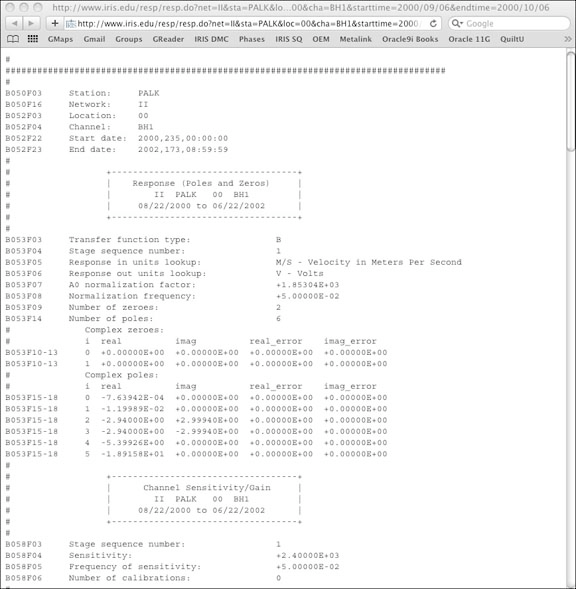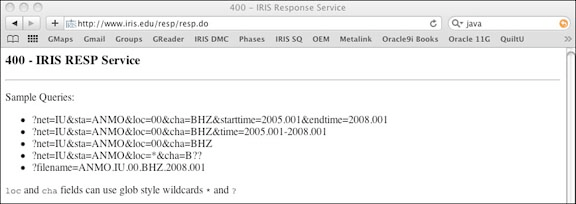New Channel Response Tool
The IRIS DMC has a new web mechanism to query response information via the http protocol. SeismiQuery and the MetaData Aggregator use this new Java servlet named resp.do.
The SeismiQuery response page displays a form into which channel criteria can be entered. You may query using a specific virtual or real network and station. It allows a limited amount of wildcards so that you can retrieve multiple location or channel codes and you can specify a particular time period of interest. This input is then reformatted into a call to the resp.do Java servlet when the View Results button is pressed.

Similarly, the MetaData Aggregator (MDA) uses the information from the station or channel page you are on to construct the parameters used when you click on the View RESP link. From a Station summary page in mda, the View RESP link on the station line will display the response information for all channels for the lifetime of the station. From a single channel page in mda, only responses from that location/channel for the life of that channel will be displayed.

Either SeismiQuery or MetaData Aggregator will result in a screen display of the channel response information in resp file format (plain text.) To save this information to your own computer, simply use the right click, save as option of your browser and select type text.

http://ds.iris.edu/resp/resp.do will show a usage summary of the Java servlet. This can also be called directly by manually supplying the needed parameters, making the servlet behave as a REST-like web service.

IRIS DMC is forging ahead with an ever-growing number of convenient web services that provide small, self-contained, and stateless functionality for data access, presentation, and transformation. This RESP service is the latest example among other such web browser driven services such as MDA, gmap, and vnets. Programmatic services are currently being developed which will expand on these capabilities to provide more powerful and flexible activities, leading to both REST and SOAP style protocols to provide our user base the widest range of choices for acquiring customized data and visualizations from our data center.
More information
To find out more about SeismiQuery go to http://ds.iris.edu/SeismiQuery/
To read more about MetaData Aggregator, go to: http://ds.iris.edu/ds/newsletter/vol8no3/new-web-interfaces and to use MDA: http://ds.iris.edu/mda/
More information about resp.do is available at: http://ds.iris.edu/resp/resp.do
by Sue Schoch (IRIS Data Management Center)






